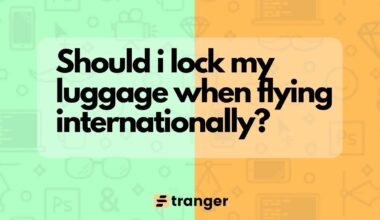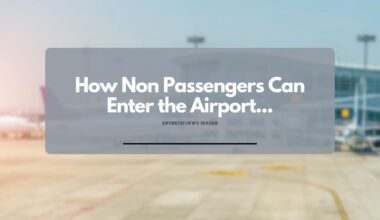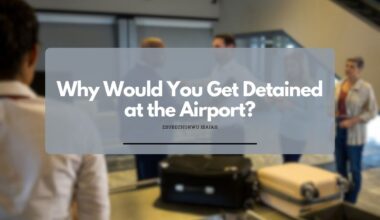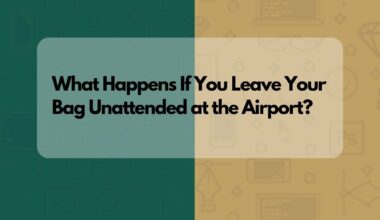As an Amazon Associate, I earn a small commission from qualifying purchases. Learn more about this.
We all know that bags that go under the plane are checked.
But then, when you entrust your personal belongings to an airline, you want to know what the chances are of those items being rifled through, intentionally or otherwise.
And while exact numbers can vary depending on several factors, including the airport, the airline, and the specific security procedures in place, we can still offer some general insights.
How Often Do Checked Bags Get Searched?
The answer isn’t straightforward, mostly because the rate of checked bag searches can vary based on several factors, including the airport, the country, and even the specific flight you’re on.
In the United States, the Transportation Security Administration (TSA) is responsible for ensuring the safety of all flights.
According to the TSA, every single checked bag is screened for explosives and other prohibited items, but not all bags are opened and manually inspected.
This is one of the things that happens after a bag is checked in by the airline.
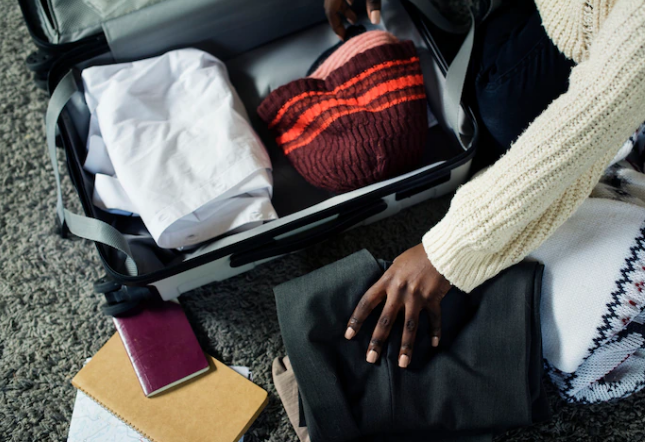
So, let’s talk numbers.
While the TSA doesn’t make it a duty to disclose the percentage of checked bags that are manually inspected yearly, the body reported over 5% of bags requiring physical inspection by a TSO in 2022.
In other words, the probability of your luggage being searched manually is 5 in 100 (or 5%).
Other industry experts argue it’s much lower, perhaps around 2-3%. Again, the rate may be higher for international flights or flights that trigger certain security criteria.
The point is, that the likelihood of your checked bag being searched isn’t zero, but it’s also not a guarantee.
It’s also worth mentioning that the screening process for checked bags is quite sophisticated. There are several approaches depending on the situation:
| Screening Method | Likelihood of Occurrence | What To Expect |
|---|---|---|
| X-ray Screening | Very High (Almost all bags) | Quick scan; no impact on most travelers |
| Random Manual Search | Low (Randomly selected bags) | Bag opened and inspected |
| Targeted Manual Search | Variable (Based on risk factors) | More in-depth search; could involve swab tests |
| Sniffer Dog Inspection | Moderate (High-risk routes) | Dogs sniff for prohibited items; may lead to manual search |
| Customs Check (International) | High (All bags on international routes) | Items inspected for customs violations |
Advanced technology, like CT scanners and X-ray machines, allow security personnel to screen the contents of bags without necessarily having to open them.
If they do find something suspicious, however, they have the authority to open the bag for a more thorough search.
When this happens, a “Notice of Baggage Inspection” is usually placed inside your bag to let you know it has been manually inspected.
Now, you might be wondering why certain bags get selected for manual searches while others don’t.
Let’s talk about this in the next section.
Why Do Checked Get Manually Searched?
The “why” behind checked bag searches is often rooted in safety and security protocols.
Given that aviation has been a target for illegal activities, including terrorism, there’s an understandable emphasis on rigorous security procedures.
Now, this doesn’t mean that every bag is subjected to manual scrutiny.
As we discussed earlier, many bags go through the system with just an X-ray scan. But let’s break down the reasons why some bags are selected for a closer look.
- Unidentifiable Objects: X-ray machines are incredibly efficient, but they’re not perfect. If an item in your bag looks suspicious or simply can’t be identified through the X-ray image, a manual search becomes necessary.
- Random Selection: Sometimes, bags are chosen for a manual search entirely at random. This random element is designed to add an extra layer of unpredictability to the security process, making it harder for illicit activities to bypass the system.
- Specific Alerts or Flags: If you’re flying internationally or to a high-risk destination, your bag might be subjected to extra scrutiny. Similarly, if there’s a heightened security alert, either due to current events or intelligence reports, the number of manual bag checks can increase.
- Personal Factors: While it’s not common, personal factors like your travel history, behavior, or even specific intelligence can also trigger a bag search.
If your bag is manually searched, you’ll generally find a note inside your luggage informing you of the inspection.
This note is meant to assure you that the opening of your bag was a security protocol and not a breach of your personal property.
Related: When Your Luggage Doesn’t Fly With You
What are some common causes for alarm or violations with checked bags?
Here are some of the main culprits that can get your checked bag flagged.
- Prohibited Items: This seems like a no-brainer, but you’d be surprised how often people pack items that are clearly prohibited. We’re talking about things like fireworks, flammable liquids, or other hazardous materials. Always refer to your airline’s specific rules and the TSA guidelines for a list of prohibited items.
- Sharp Objects: While some sharp objects are allowed in checked bags, they can raise alarms if not packed properly. For example, scissors, knives, or other sharp tools should be securely wrapped so they don’t pose a danger to inspectors or baggage handlers.
- Liquids Over the Allowed Limit: You might think the liquid restrictions only apply to carry-on bags, but some limitations apply to checked luggage as well. For example, alcohol content above a certain percentage might not be allowed, or only allowed in limited quantities.
- Electronics: While electronics are generally allowed in checked bags, large clusters of wires or batteries can sometimes trigger alarms during the X-ray process. Make sure to follow airline guidelines on how to pack these items.
- Food Items: Especially in international travel, certain food items can trigger a customs violation. Things like fruits, meats, and seeds can be restricted or prohibited depending on your destination.
- Medications and Medical Equipment: Prescription medications should generally be carried in your hand luggage with proper documentation. However, if you do pack them in your checked bag, make sure they are clearly labeled and you have all necessary prescriptions and documentation, as they could trigger a search.
- Overweight or Overpacked Bags: Bags that exceed the airline’s weight limit or look overstuffed might not necessarily trigger a security alarm, but they could lead to additional fees and possibly even a manual search to determine the cause of the excess weight.
- Unusual Shapes or Density: Sometimes, it’s not about the item itself, but how it appears on the X-ray. Unusual shapes or density can obscure the view, making it difficult for the agents to determine if the item poses a threat.
Conclusion
The ins and outs of checked bag searches can make your next trip to the airport less stressful and more predictable.
While the vast majority of checked bags pass through the screening process without issue, it’s good to be aware that random checks do happen, often for important safety reasons.

